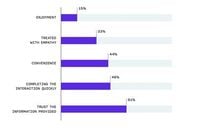In today’s hyper-connected world, data privacy is no longer just a legal requirement; it’s a core pillar of business trust and competitive advantage. As organizations collect and process vast amounts of personal data, the regulatory landscape has grown increasingly complex. The General Data Protection Regulation (GDPR) in Europe and the California Consumer Privacy Act (CCPA) in the United States have set new standards for transparency, accountability, and consumer rights. For Chief Information Security Officers (CISOs), these regulations present both challenges and opportunities.
Navigating the maze of global privacy laws requires a nuanced understanding of legal obligations, operational realities, and evolving threats. CISOs must work across teams to align security controls with regulatory requirements, foster a culture of privacy, and prepare for the next wave of data protection laws. This article explores the essentials of GDPR, CCPA, and other key regulations, offers actionable compliance strategies, and discusses how CISOs can future-proof their organizations in a rapidly changing environment.
Navigating the Global Patchwork of Data Privacy Laws
The regulatory landscape for data privacy is both broad and fragmented. The GDPR, enforced since 2018, applies to any organization regardless of location that processes the personal data of EU residents. It emphasizes principles such as data minimization, purpose limitation, and explicit consent while granting individuals rights like access, rectification, and erasure. Penalties for non-compliance can reach up to 4% of global annual revenue, making GDPR a powerful motivator for robust data governance.
Meanwhile, the CCPA, effective since 2020, grants California residents the right to know what personal information is collected about them, request deletion, and opt out of the sale of their data. The CCPA’s scope has expanded with the California Privacy Rights Act (CPRA), which introduces new rights and stricter obligations for businesses. Beyond these, other jurisdictions are enacting their own regulations, including Brazil’s LGPD, India’s DPDP Act, and Canada’s PIPEDA, to name a few. Each law has unique definitions, requirements, and enforcement mechanisms, creating a patchwork of obligations for global organizations.
For CISOs, this means mapping data flows across borders, understanding the nuances of each regulation, and ensuring that privacy controls are both comprehensive and adaptable.
Five Strategic Actions to Achieve Compliance
Achieving compliance with data privacy regulations is not a one-time project—it’s an ongoing process that requires leadership, coordination, and continuous improvement. CISOs can drive compliance and reduce risk by focusing on these five strategic actions:
- Comprehensive Data Mapping and Classification: Begin with a thorough inventory of all personal data your organization collects, processes, and shares. Use automated discovery tools to identify data across cloud and on-premises environments. Classify data by sensitivity, regulatory jurisdiction, and business purpose. This foundational step enables targeted controls and reduces the risk of accidental exposure.
- Robust Consent and Preference Management: Replace ambiguous consent forms with clear, granular options for users. Implement systems to track, manage, and document consent throughout the data lifecycle. Ensure that third-party vendors also adhere to your consent standards and provide mechanisms for users to easily update their preferences or withdraw consent.
- Incident Response and Breach Notification Planning: Develop and regularly test incident response plans that address regulatory requirements for breach notification. For example, GDPR mandates notification within 72 hours of discovering a breach. Conduct tabletop exercises and simulations to ensure your teams can respond quickly, communicate effectively, and minimize legal and reputational damage.
- Vendor and Third-Party Risk Management: Evaluate the data privacy practices of all vendors, contractors, and partners who process personal data on your behalf. Incorporate data protection clauses into contracts, conduct regular audits, and require evidence of compliance. Continuous monitoring and risk management help prevent third-party breaches that could impact your organization.
- Ongoing Privacy Training and Awareness: Move beyond annual compliance training to create a culture of privacy. Offer role-specific workshops, real-world phishing simulations, and regular updates on regulatory changes. Empower employees to recognize privacy risks and report incidents, making privacy a shared responsibility across the organization.
By embedding these practices into daily operations, CISOs can build a resilient privacy program that not only meets regulatory requirements but also earns the trust of customers and stakeholders.
Future-Proofing Privacy: Leadership, Agility, and Innovation
Looking ahead, the data privacy landscape will only grow more complex. New regulations are emerging, existing laws are being updated, and technologies like artificial intelligence and machine learning are introducing novel risks. For CISOs, future-proofing privacy means adopting a proactive, agile approach that goes beyond mere compliance.
CISOs should lead efforts to embed privacy by design into every project and process, ensuring that new products and services are developed with privacy at their core. This involves close collaboration with legal, product, marketing, and engineering teams to align privacy controls with business objectives and customer expectations. As AI systems become more prevalent, CISOs must ensure transparency in automated decision-making, implement bias detection, and provide user consent and redress mechanisms. Investing in advanced privacy-enhancing technologies such as differential privacy, homomorphic encryption, and secure multi-party computation can help organizations leverage data while minimizing risk.
Regular privacy impact assessments and risk analyses enable organizations to anticipate regulatory changes and adapt quickly. Championing privacy as a business differentiator means treating it not just as a compliance obligation but as a source of competitive advantage. Transparent data practices, strong user controls, and rapid breach response can differentiate your brand and build lasting customer loyalty.
Engaging with policymakers and industry groups is also crucial. Participating in industry forums and policy discussions can help shape future regulations. Collaboration with peers and regulators can lead to more harmonized standards, reducing compliance complexity and fostering innovation.
Ultimately, the most effective CISOs are those who view privacy as a dynamic, organization-wide mission. By fostering a culture of continuous improvement, investing in innovation, and aligning privacy with business strategy, CISOs can transform regulatory challenges into opportunities for growth and resilience. In this rapidly evolving landscape, leadership, agility, and vision will define the organizations that not only survive but thrive.
On April 17, 2025, the U.S. National Institute of Standards and Technology (NIST) updated its Privacy Framework to bring privacy and security closer together. This update aims to address current privacy risk management needs and maintain alignment with NIST’s recently updated Cybersecurity Framework. Julie Chua, director of NIST’s Applied Cybersecurity Division, described the update as a "modest but significant" change. The new framework includes a section on AI and privacy risk management, highlighting the relationship between AI and privacy risks.
As the global Data Privacy Compliance Service market is projected to expand at a compound annual growth rate (CAGR) of 12.1% from 2025 to 2032, reaching $7 billion, businesses are increasingly investing in compliance solutions. This growth is driven by rising data breaches, increasing regulatory scrutiny, and heightened consumer awareness regarding data privacy.
In this complex environment, organizations must remain vigilant, proactive, and innovative in their approach to data privacy, ensuring they not only comply with regulations but also build trust with their customers.




